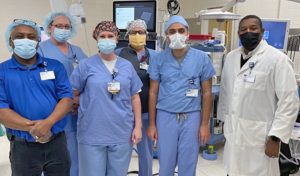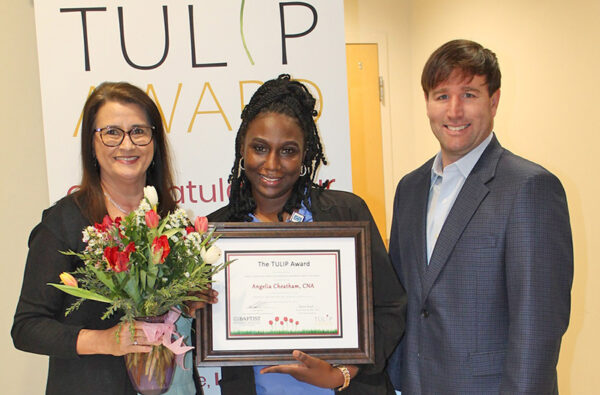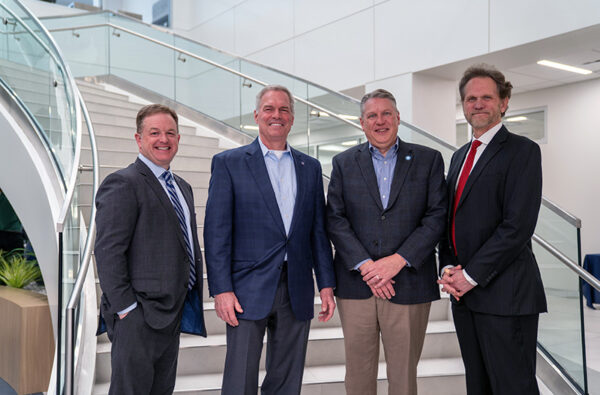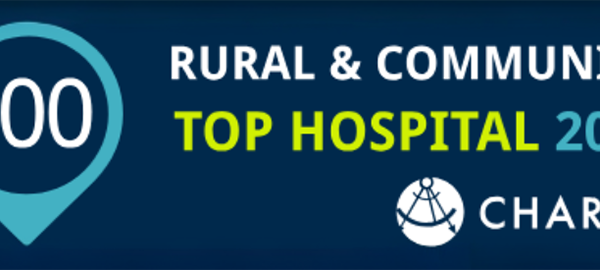Baptist Cancer Center is offering leading-edge technology for minimally invasive biopsies of the lungs. At both Baptist Memphis and Baptist North Mississippi, patients can now get an earlier, more accurate diagnosis of smaller, difficult-to-reach lung nodules.
At Baptist North Mississippi in Oxford, physicians have been among the first in the U.S. to use Auris Health’s Monarch Platform robotic bronchoscopy system, which allows surgeons to remove and biopsy smaller lung nodules that are difficult to see or reach. The system combines advances in robotics, software, data science and endoscopy for earlier lung cancer detection.
 Baptist Memphis is home to the first cone beam, computed tomography-guided robotic bronchoscopy program in Memphis. It combines traditional endoscopic views into the lung with computer-assisted navigation based on 3D models of the patient’s own lung anatomy with continuous bronchoscope vision during the procedure.
Baptist Memphis is home to the first cone beam, computed tomography-guided robotic bronchoscopy program in Memphis. It combines traditional endoscopic views into the lung with computer-assisted navigation based on 3D models of the patient’s own lung anatomy with continuous bronchoscope vision during the procedure.
We talked with Dr. Anurag Mehrotra, interventional pulmonologist with Baptist Cancer Center, to learn more about what this combination of a robot with a cone beam, CT-guided scanner means for earlier lung cancer detection.
Why is cone beam, CT-guided robotic bronchoscopy an important advancement for patients?
The goal is to diagnose early, accurately and get patients treated. That’s the only way we can reduce death from lung cancer. As an interventional pulmonologist, I focus on getting patients to quit smoking and enroll in our low-dose CT program, and if there’s an abnormality in the lung, such as a lung nodule, we investigate that.
Traditionally, physicians have had difficulty investigating small lung nodules that are 1 centimeter (the length of a staple) or less in size. Options have been limited. Many times, these nodules are not reachable by traditional means of biopsy.
At Baptist Memphis, we use the Ion Endoluminal System by Intuitive – a robotic-assisted platform we combine with a cone beam, CT-guided scanner. We’re the only provider in Memphis to offer this combination.
If there’s a lung nodule that’s concerning and it’s still very small and needs to be investigated, we bring the patient in under anesthesia, and we robotically navigate to the nodule and do a CT scan to confirm position, which improves our accuracy. We can take samples without leaving a scar.
The robot takes you to the lesions, and the cone beam CT confirms you are there. If you need to make changes while deep inside the lung, you can make precise changes with the robot. It’s like combining your GPS while having eyes on the street.
This technology is going to lead to a lot of lives saved and helps us meet our goal for the Mid-South Miracle of reducing lung cancer deaths by 25% by 2030.
How is it different from other methods used for obtaining lung tissue biopsies?
Before, we used CT-guided biopsy or electromagnetic navigational bronchoscopy. With more traditional methods, it’s difficult to go after small nodules, and patients would have to wait until they became big enough to be investigated. The problem with that approach is that we’re not able to diagnose as early.
Has cone beam, CT-guided robotic bronchoscopy been used with Baptist Cancer Center patients?
We’ve already used this technology with several patients since February. It’s helped with diagnosing cancer, benign diseases and fungal infections. Patients have received treatment, radiation therapy and curative resection of lung cancer.
We’ve diagnosed cancers as small as 8 millimeter. This would not have been possible before. Some of our patients even waited for this technology.
What’s unique about Baptist Cancer Center’s approach to care besides this technology?
At Baptist Cancer Center, we have a Multidisciplinary Thoracic Oncology Clinic with physicians from multiple specialties consulting weekly on patients’ treatments. It’s a group of people interested in lung cancer and lung nodules. The goal is to diagnose lung cancer early for better outcomes.
This consortium includes oncologists, pulmonologists, interventional pulmonologists, radiologists, thoracic surgeons, pathologists, nurse navigators and data mangers. Patients don’t have to make multiple visits to different clinics.
It’s a unique group in the South that meets on a regular basis and comprises all these specialties focused on collaborative lung cancer diagnoses. We’d like Baptist Cancer Center to become a National Center of Excellence — and the country’s leading lung cancer center.
Anything you’d like to add?
It’s always about patients, not tools. It’s very important to keep in mind we’re taking care of individuals, not abnormalities. Not everyone needs the procedure. Many lung nodules are benign. If patients need the procedure, then we provide the best possible care for them.






